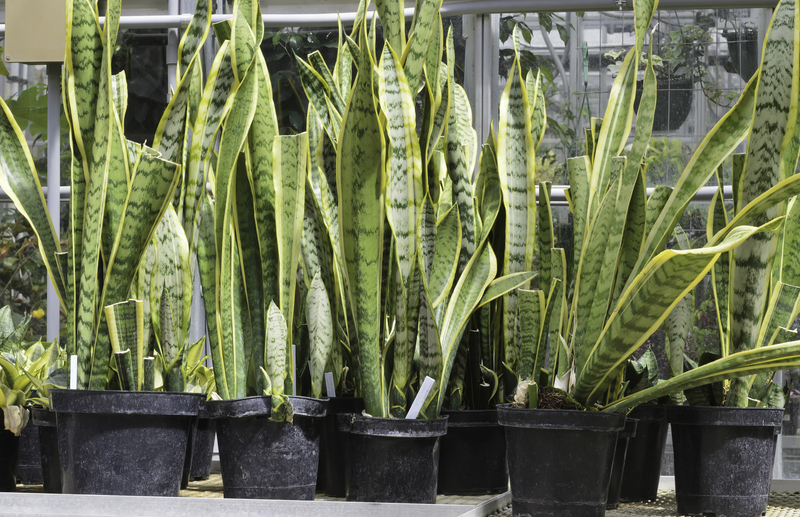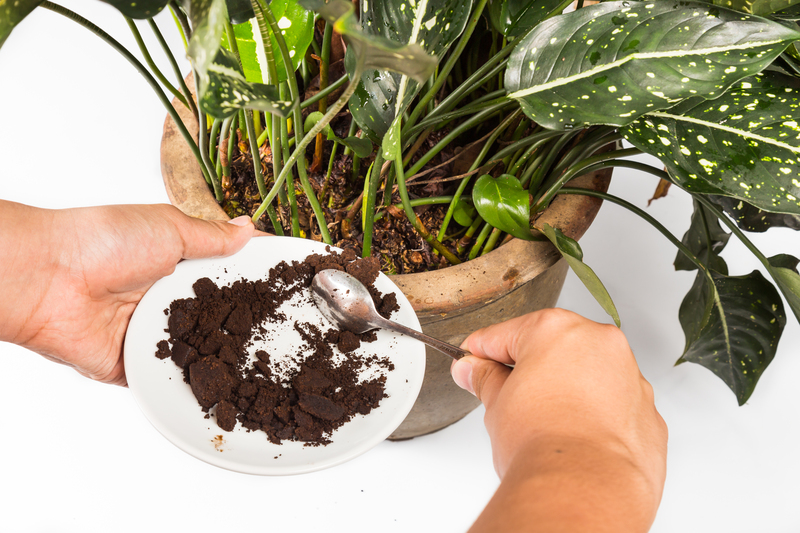Container Gardening for Beginners and Enthusiasts
Posted on 17/08/2025
Container Gardening for Beginners and Enthusiasts
Container gardening has grown in popularity over the last decade, providing everyone from urban dwellers to suburbanites with an accessible way to nurture plants. Whether you are a complete beginner or a passionate gardening enthusiast, creating a thriving container garden can be both rewarding and surprisingly simple. In this comprehensive guide, we'll cover everything you need to know about getting started, choosing plants, container selection, soil, watering, and much more.
What is Container Gardening?
Container gardening refers to the practice of growing plants exclusively in containers rather than planting them in the ground. This method is ideal for those with limited space, poor soil quality, or a desire to add versatility and style to their gardening pursuits. Container gardens can range from simple potted herbs on a windowsill to elaborate arrangements on patios and balconies.
Main Benefits of Container Gardening
- Space efficiency: Perfect for small apartments and limited spaces.
- Mobility: Easily move plants to capture sunlight or protect from harsh weather.
- Soil control: Customize soil for each plant's unique needs.
- Pest and weed reduction: Less weeding and easier pest management.
- Year-round gardening: Grow plants outdoors in summer and bring indoors in winter.

Getting Started: The Basics of Container Gardening
Choose the Right Container
The first step in successful container gardening is picking appropriate containers. Your choice will impact plant health and aesthetics. *Consider the following factors*:
- Material: Clay, terracotta, ceramic, and plastic are common. Each has pros and cons for moisture retention and durability.
- Size: Ensure the pot is large enough for roots to grow and includes drainage holes.
- Drainage: Adequate drainage is essential to prevent root rot. If your chosen pot doesn't have holes, drill some.
- Appearance: Match the style to your decor or outdoor environment.
Understand the Importance of Drainage
Overwatering is a common mistake, especially among gardeners new to container horticulture. Proper drainage helps avoid waterlogged soil and promotes a healthy root system. Always use pots with at least one drainage hole and consider a shallow layer of stones at the bottom to aid water flow.
Selecting Plants for Container Gardens
One of the brilliant aspects of container gardening is the sheer diversity of plants you can cultivate. From flowers to fresh herbs, vegetables, shrubs, and even small trees, the possibilities are nearly endless. Here are some best choices for both beginners and experienced enthusiasts:
Best Plants for Beginners
- Herbs: Basil, parsley, chives, mint, and thyme are easy to grow and useful in the kitchen.
- Leafy Greens: Start with lettuce, spinach, or arugula--fast-growing and productive.
- Flowers: Marigolds, petunias, pansies, and geraniums bring color with little fuss.
- Succulents: These hardy plants thrive with minimal watering.
Container Gardening for Enthusiasts
- Edible Plants: Tomatoes, peppers, dwarf fruit trees, strawberries, and blueberries.
- Ornamental Grasses: Add dramatic texture and movement.
- Exotic Flowers: Orchids, fuchsias, and tropical plants for advanced container gardens.
Choosing the Ideal Potting Mix
Unlike in-ground plants, container-grown plants rely solely on the soil mix you provide. Never use plain garden soil--it is often too heavy and may hold too much water or introduce pests and diseases. Instead, select a high-quality potting mix designed specifically for containers. Look for mixes that are:
- Lightweight and well-draining.
- Rich in organic matter.
- Contain perlite or vermiculite for added aeration.
*Organic blends* with added compost can provide nutrients but monitor the needs of each plant for best results.
Sunlight and Placement Tips
Plant requirements for light vary widely. Before planting, observe your space at different times of the day to determine how much sunlight it receives. Typical light needs are:
- Full sun: 6+ hours of direct sunlight (tomatoes, peppers, most flowers).
- Partial sun: 3-6 hours of sun (herbs, greens, annuals).
- Shade: Less than 3 hours of sun (ferns, hostas, impatiens).
Arrange container plants so that taller ones do not shade out shorter specimens unless intentional.
Watering Your Container Garden
In container gardening, watering is perhaps the most critical maintenance task. Because container soil dries out faster than ground soil, you must check regularly.
- Check moisture: Stick a finger an inch into the soil; if it feels dry, it's time to water.
- Water deeply: Ensure water reaches roots--typically until it drains from the bottom.
- Morning is best: Reduces water loss and discourages fungal diseases.
- Avoid soggy soil: Overwatering is worse than underwatering for many plants.
Self-watering containers and drip irrigation systems can assist busy gardeners.
Fertilizing Container Gardens
Since nutrients in pots are used up faster, fertilizing is vital to maintain healthy and robust plants. Rely on:
- Slow-release fertilizers: Mixed into soil at planting for steady nutrition.
- Liquid feeds: Supplemental feeding every 2-4 weeks during active growth periods.
- Organic options: Fish emulsion, seaweed extract, or compost tea offer eco-friendly alternatives.
Always follow package instructions and tailor feeding to the specific requirements of your plant varieties.
Creative Container Gardening Ideas
Container gardening isn't just practical--it's also a chance to express your creativity. Mix and match plants, pots, and styles to design beautiful and unique displays. Here are some *inspiring ideas*:
- Vertical gardens: Use wall-mount planters or stacked pots for small spaces.
- Themed containers: Try a Mediterranean herb pot (oregano, thyme, rosemary) or a pollinator-friendly flower mix.
- Upcycled containers: Transform old teacups, buckets, or boots into quirky garden features.
- Color schemes: Group plants with complementary foliage and flower colors for harmony.
- Seasonal displays: Swap plants for autumn, winter, spring, and summer to keep displays fresh year-round.
Common Mistakes in Container Gardening (and How to Avoid Them)
Every gardener, whether novice or expert, makes mistakes. Learning from these common pitfalls can save time and plants:
- Choosing the wrong container size: Too small can restrict growth and dry out quickly.
- Poor drainage: Always ensure pots have holes.
- Using garden soil: It compacts, holds water, and can introduce pathogens.
- Planting incompatible species: Pair plants with similar sunlight and watering needs.
- Neglecting regular care: Consistency in watering, feeding, and pruning is key.
Container Gardening for Small Spaces
Don't let limited square footage deter you from enjoying container gardening. It's the perfect solution for balconies, patios, and even indoor nooks.
- Hanging planters: Make use of vertical space indoors or outdoors.
- Window boxes: Brighten up sills and maximize sunlight access.
- Stackable containers: Go vertical with tower gardens or tiered arrangements.
Arrange containers tightly for a lush look, but ensure sufficient airflow around each plant to minimize disease risk.
Seasonal Care and Overwintering
Container gardens need adjustments with the change of seasons. Care tips by season include:
- Spring: Refresh potting soil, prune dead growth, and add new plants.
- Summer: Water deeply and often, consider mulch to retain moisture, and provide shade if temperatures soar.
- Autumn: Remove spent annuals, cut back perennials, and prepare containers for winter.
- Winter: Bring tender plants indoors or insulate pots to prevent freezing. Group containers for added warmth.
Pest and Disease Management in Containers
Container gardening offers advantages for pest and disease control because pots can be isolated or moved. Still, vigilance is important:
- Inspect plants regularly for aphids, spider mites, and other pests.
- Maintain hygiene by removing dead leaves and debris.
- Promote airflow to prevent mold and mildew.
- Use organic controls: Neem oil, insecticidal soap, or introducing beneficial insects.

Frequently Asked Questions: Container Gardening
How often should I water container plants?
Frequency depends on plant type, container size, and season. Most plants need watering when the top inch of soil feels dry. In hot weather, daily watering may be necessary.
Can I reuse potting soil?
You can reuse container soil if it's not infested with pests or diseases. Refresh it by removing old roots, mixing in compost, and adding fresh potting mix.
How do I fertilize container plants?
Feed with a balanced liquid fertilizer every few weeks, or use slow-release granules when planting. Adjust feeding based on plant growth and type.
What plants are best for indoor container gardening?
Herbs, succulents, snake plants, pothos, and peace lilies are excellent choices for indoor containers. Ensure adequate light, either natural or from grow lamps.
Can I grow vegetables in containers?
Absolutely! Many vegetables like tomatoes, peppers, lettuce, and carrots thrive in containers. Choose deep pots and use nutrient-rich soil.
Conclusion: Grow Your Green Space Anywhere
Container gardening is a versatile and joyful pursuit that brings greenery to any environment. Whether you're a beginner just learning the basics or a seasoned enthusiast seeking fresh challenges, there's always more to explore. Experiment with new plants, innovative containers, and creative arrangements--your green thumb will only improve with each season. Enjoy the journey and let your container garden become a living reflection of your style and dedication!
Ready to start your own container gardening adventure? With a little preparation, the right plants, and ongoing care, you'll reap the rewards--beautiful blossoms, homegrown herbs, and even fresh produce, right at your doorstep or window.



